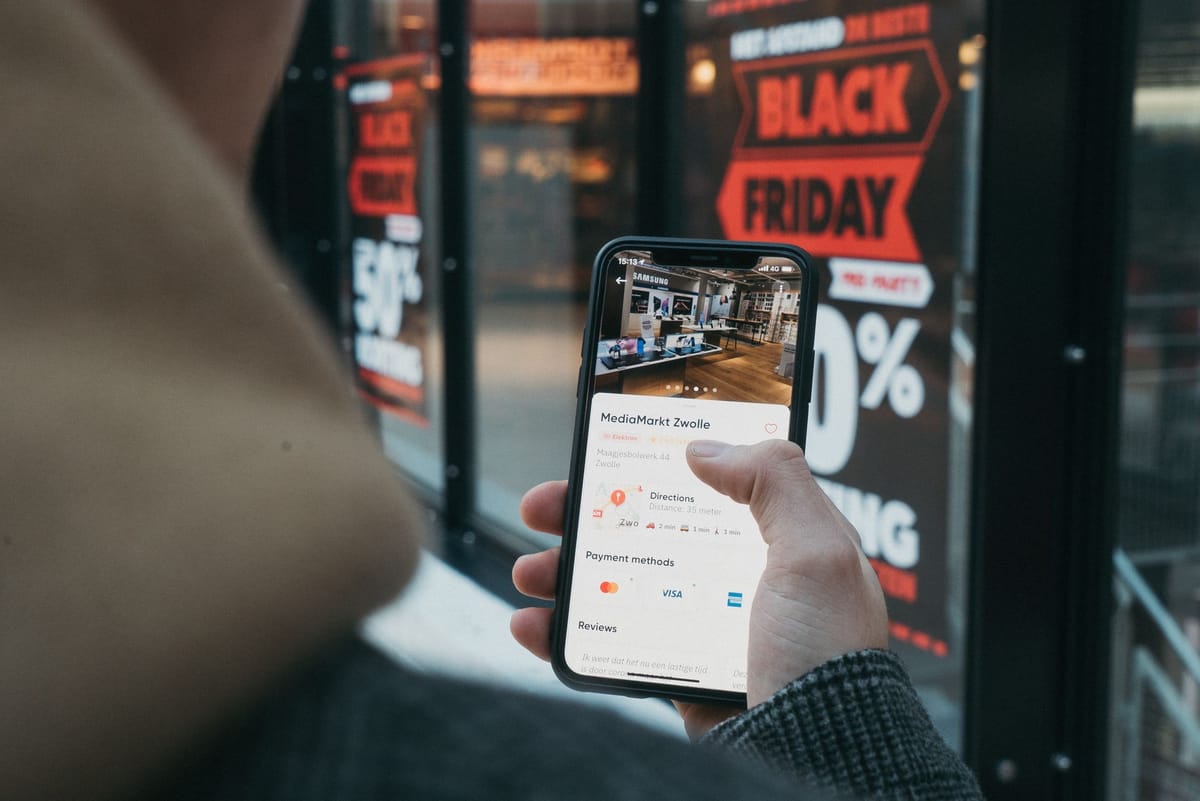Unlocking Omnichannel E-commerce Success by Mastering Inventory

In the fast-paced and ever-evolving world of omnichannel retail, inventory management has long been a perplexing puzzle for commerce professionals. The rapid rise of retailing across multiple sales channels, online and off, has forced inventory management to transform itself. Fortunately, software vendors have kept pace. Let's look at how innovative cloud-based inventory management technologies unlock elegant, one-stop-shop solutions for retailers.
The Evolution of Omnnichannel Retailing

Whatever the retail channel, customers today demand a seamless and consistently branded shopping experience, in-store or online. There should be no negative surprises. Retailers must meet expectations, creating unified customer journeys. Retail giants are leading the way to master seamless integration of the retail experience across multiple channels at once, but smaller brands and multi-brand shops are following suit.
The rising expectations of consumers demands that logistics professionals assemble a diverse toolkit – mobile apps, eCommerce platforms, advanced analytics – to bridge gaps and variations among various points of sale. Selling systems must convey the status of stock at all times, integrating seamlessly with all warehousing and delivery functions. The immensity of inputs and outputs requires a strategic plan and integrated back end to optimize retail success.
Inventory management is the art of having the right stock in the right place at the right time.
What is Stock and How Do We 'SKU' It?

Before plunging into the day-to-day problems and solutions for inventory management in an omnichannel world, let’s step back, zoom out, and contemplate philosophically what we do.
Ah, Grasshopper, do you know what the meaning of stock is?
In this question, and its answer lies the essence of inventory management. Stock is akin to inventory, but let’s take a deep dive into the word itself. Derived from the German stuck, meaning “piece,” it is a unit of product. For the retailer, of course, it is the essential data that must be tracked. For this reason, it boils to the meaning of SKU: Stock Keeping Unit. We in the business rarely think about it, but the SKU is how we measure our business and its success.
When we think of stock-keeping, we may associate with a related concept: time-keeping. What’s time-keeping? Time can be broken down infinitely, but however we measure it, it’s “on the clock.” Time is money and delay is the enemy to making money and satisfying customers.
Last, but not least, is “place-keeping” – the physical location of a piece, its coordinates in space. The system needs to know where something is, and how to move it from point A to point B, to change its place. That’s logistics.
Omnichannel, of course, vastly increases the variables, permutations, and complications. The challenge for commerce professionals is to track it all, and keep it “up” at all times. They must “take stock” of inventory as a doctor takes a pulse and measures all the patient’s vital signs. The warehouse is like a heart: it needs to pump out the product while maintaining a steady flow.
Key Inventory Management Challenges
Let’s review some issues involving inventory management and see where the problems lie. Omnichannel retailing, integrating various sales channels – physical stores, e-commerce sites, mobile apps, and more – has dramatically increased the complexity of inventory management.

Diversity of Channels and Touchpoints: In omnichannel, customers can interact with a retailer through multiple channels: browse online, purchase in-store, and order from a mobile app. This makes it crucial to maintain accurate, real-time inventory data across all channels to avoid stockouts or overstock situations.
Higher Customer Expectations: Consumers expect a consistent and seamless shopping experience across all channels. If a product is listed as available on a website but turns out to be out of stock when a customer visits a physical store, it can lead to frustration and damaging reviews. Better inventory management ensures that customers can trust product availability info, enhancing their shopping experience.
Inventory Optimization: Effective inventory management applications can leverage data analytics and artificial intelligence to optimize stock levels and minimize holding costs. With omnichannel retail, inventory must be allocated strategically to meet demand from various channels while avoiding excess stock. AI-driven demand forecasting can help retailers allocate inventory more efficiently.
Supply Chain Visibility: Retailers must have a clear view of their entire supply chain, including suppliers, warehouses, and distribution centers. Inventory management applications can provide end-to-end visibility, allowing retailers to make informed decisions about restocking, fulfillment, and distribution.
Real-time stock visibility is akin to retail radar, preventing stockouts and ensuring uninterrupted flow. Retailers are keenly sensitive to the importance of this tool, ensuring brick-and-mortar store shelves and online pages are reporting correct status and thus stay stocked. Amazon does a great job in providing this kind of transparency, though online only.
In inventory management, data silos are the enemy. They trap vital information, preventing data from reaching the right place at the right time. So there’s a need to break down these silos, one way or another, to illuminate these blind spots and liberate flow interruptions, freeing trapped data about the scattered stock.
The problem is not just multiple data sources, but multiple vendor systems following disparate standards and processes. Warehouse managers and commerce professionals are not solitary players but part of a vast team that spans many suppliers in different regions and languages.
Centralized inventory management provides a unified view of stock, enabling real-time insights across channels. Retailers like Walmart have embraced this approach, fostering agile inventory control through real-time data sharing.
Demand forecasting uses historical data, analytics, and AI to predict future sales. Accurate forecasting allows retailers to prepare inventory for expected surges or declines, optimizing stock levels and minimizing wastage.
Safety stock levels act as a buffer against unforeseen demand or supply chain disruptions. For omnichannel retailers, calibrating the right safety stock levels is crucial to ensure product availability across all channels without overstocking.
Return management in omnichannel demands processes for handling cross-channel returns, ensuring stock accuracy and happy customers by offering hassle-free return experiences.
Strategies for Effective Inventory Management
Effective inventory management is the foundation for today's any-channel, all-the-time retail landscape. Each of the problems identified above has attracted the attention of inventory management apps. But among the strategies commerce professionals use to address these issues, three stand out: Integrated IT, Vendor Orchestration, and Just In Time Inventory.
Integrated Inventory Management Systems

When the pieces of a puzzle fit together seamlessly, retail flows. To handle the complexity of omnichannel, this is the integrity that a modern inventory management system needs to deliver. Integrated systems pull together and harmonize the diverse data, products, and processes.
Inventory management systems are like dynamic data superglue, pulling together the moving data of point-of-sale systems along with all other back-end systems. The result is a symphony of data, enabling harmonious movements of information like clockwork onto dashboards, allowing managers real-time decision-making capabilities across the supply chain, from the warehouse to the retail POS.
Vendor Orchestration
The challenge of orchestrating vendors is like trying to assemble a dream team of players, like musicians in an orchestra, each with unique skills and instruments that contribute to harmony and completeness. Partnerships are strategic alliances in the world of inventory management, enabling retailers to satisfy consumer demands and expectations. A good inventory management app, possibly in combination with Zapier and similar tools, can provide this inter-organizational orchestration.
Just-In-Time Inventory
Just-In-Time (JIT) inventory systems have been around for a while. JIT minimizes stock holding costs, maintaining lean inventories while ensuring product availability via efficient restocking. It's a strategic move that demands precision. Zara, the fast-fashion giant, exemplifies this strategy, using JIT to adapt stock levels quickly to ever-changing consumer preferences.
Macy's: A Lesson in Omnichannel Inventory Management

Macy's, a top retail brand with a vast national presence and an active online platform, offers a compelling case of the critical role inventory management plays in omnichannel retail. The story goes back a decade. In 2013, the company faced big financial losses due to inventory accuracy issues. Monthly inventory degradation reached 2-3%, incurring a 24% annual loss.
Recognizing the urgency of inventory management, Macy's overhauled its approach:
Customized Inventory Management with RFID: Macy's integrated RFID technology across all its warehouses, immediately increasing inventory visibility.
"Pick to the Last Unit" Strategy: Macy's introduced the P2LU program, allowing online sales of products even when only one unit remained in-store.
Near-Real-Time Inventory Visibility: Macy's invested in systems enabling near-real-time inventory visibility for both in-store and online customers.
Macy's optimization of inventory management produced impressive outcomes:
- Macy's reduced $1 billion of inventory from stores, cutting inventory costs by one-third.
- The P2LU strategy increased fulfillment sales, enhancing overall retail performance.
However, the company’s initial focus on sales over inventory management led to losses before managers realized the importance of efficient inventory management as a profit driver.
Implementing RFID across all inventories gave a big boost to product visibility from warehouse to retail, whether online or in-store. Macy’s made sure to choose an inventory management app fully supporting RFID, real-time inventory, stock transparency, and more.
The Macy's case shows the pivotal role of inventory management in an omnichannel retail strategy, highlighting a need for adaptability and efficient warehouse and logistic processes.
Closing Thoughts About Open Systems
Optimized inventory management is no longer limited to retail giants. Smaller businesses can leverage them to “punch above their weight,” using innovations in inventory management to compete more effectively via omnichannel against even much bigger companies.
Cloud-based inventory management apps hook into diverse PoS systems, creating a centralized and integrated virtual warehouse that ensures stock data fits together and flows. This provides a wrap-around view to and from each channel online and in-store. When inventory data streams, managers command the know-how to make decisions in real-time, swiftly and accurately.
Balancing operational costs with benefits is a strategic challenge that managers must master. Legacy inventory management systems require major investments in hardware and software. Now savvy managers, seeking to cut costs, are moving to the cloud. That’s where cloud-based inventory management apps shine, offering cost-effective solutions to these inventory puzzles.


